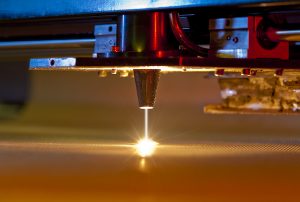To answer the question, what is laser technology and where it can be used, it’s important to understand exactly to what the term laser refers. The term itself originated as an acronym ‘light amplification by stimulated emission of radiation’. in other words, ‘laser’ is a device that emits light through the process of optical amplification, based on the stimulated emission of electromagnetic radiation.
Lasers differ from other sources of light in that it emits light coherently. Spatial coherence allows a laser to be focused to a tight spot, enabling applications such as laser cutting and lithography. Spatial coherence also allows a laser beam to stay narrow over great distances (collimation), enabling applications such as laser pointers and lidar. Lasers can also have high temporal coherence, which allows them to emit light with a very narrow spectrum, i.e., they can emit a single color of light. Alternatively, temporal coherence can be used to produce pulses of light with a broad spectrum but durations as short as a femtosecond (“ultrashort pulses”).
There’s a variety of applications in which laser technology can be used. In almost any field of science you can observe applications and devices using lasers. Here are just a few:
- Computer devices such as laser mouse, laser presentation, CD ROMs and DVD ROMs
- Astronomy and communication applications
- Medicine, surgery, and health
- War machines, guns and tanks
- Cutting matters in metallurgy industry and related industries
- Robotics, especially in image processing and calculating distances
- Toys
There are different types of lasers, and the one used will be determined by the end result. Research, medical, industrial and commercial uses will all require a different type.
Medical applications require a highly collimated beam of laser that can be further focused to a microscopic dot of extremely high density. This concept makes it useful for a cutting and cauterizing instrument.
This also holds true when it comes to welding and cutting in an industrial setting. For instance, the automobile industry uses carbon dioxide lasers with powers up to several kilowatts for computer-controlled welding on assembly lines.
Helium-neon and semiconductor lasers have become standard parts of the field surveyor’s equipment. A fast laser pulse is sent to a corner reflector at the point to be measured and the time of reflection is measured to get the distance.
Even within the garment industry, computer-controlled laser cutters are programmed to cut out 400 size 6, followed by 700 size 9 garments. The usefulness of the laser for such cutting operations comes from the fact that the beam is highly collimated and can be further focused to a microscopic dot of extremely high energy density for cutting.
Supermarket scanners typically use a helium-neon laser system to scan the universal barcodes that identify products. The laser beam bounces off a rotating mirror and scans the code, sending a modulated beam to a light detector and then to a computer which has the product information stored. Semiconductor lasers can also be used for this purpose.
Because the use of lasers is ever-expanding, it is essential that any design include lenses that capture the exact image for which it is designed. At Universe Optics, we offer a wide variety of precision lenses for use in laser technology.
We pride ourselves on creating exactly what your instrument requires, therefore if you don’t see one that meets your specifications, our team will work alongside your designers to ensure the lens is the right fit.